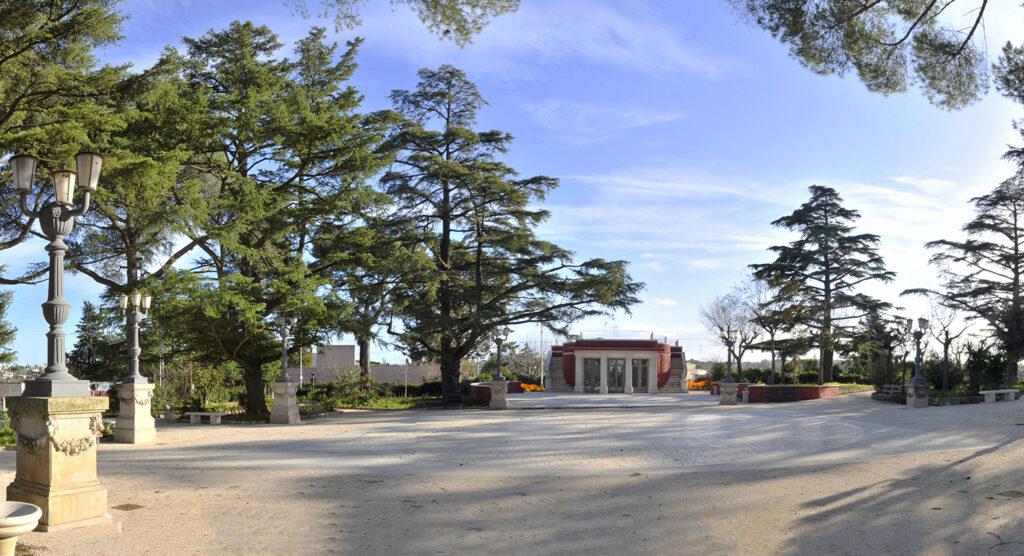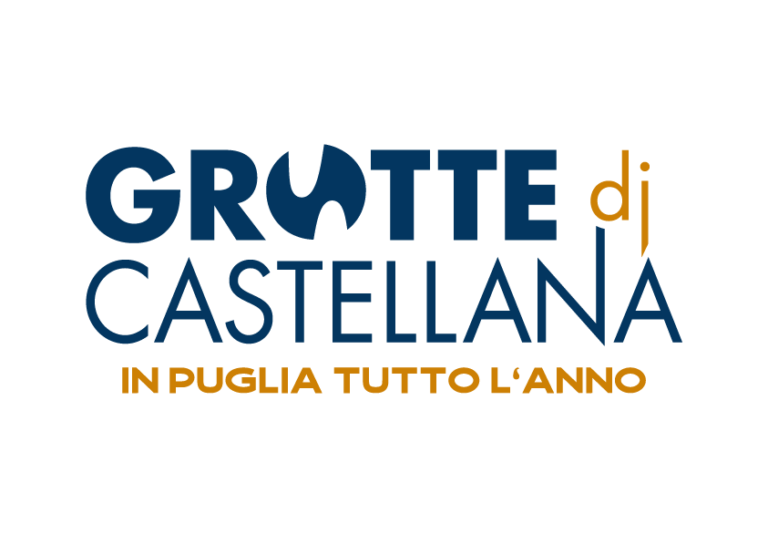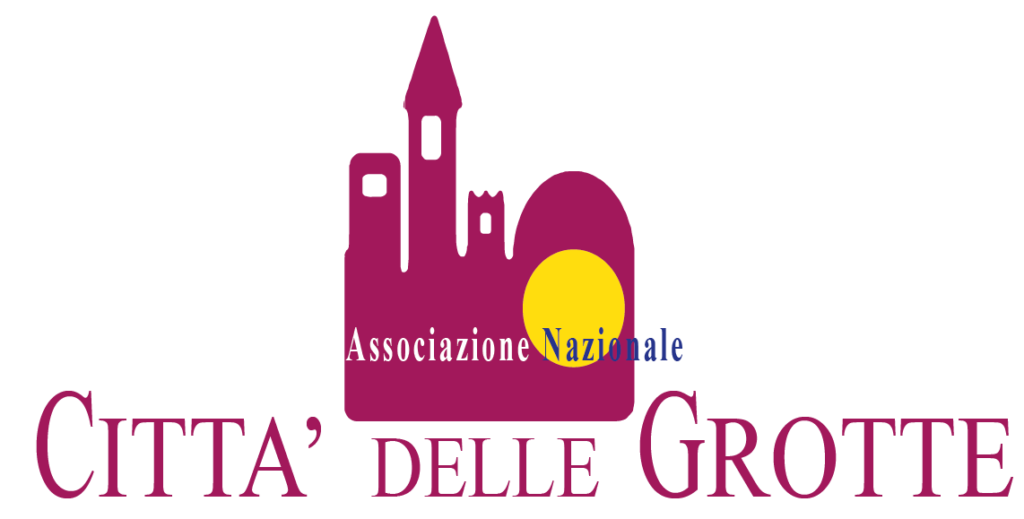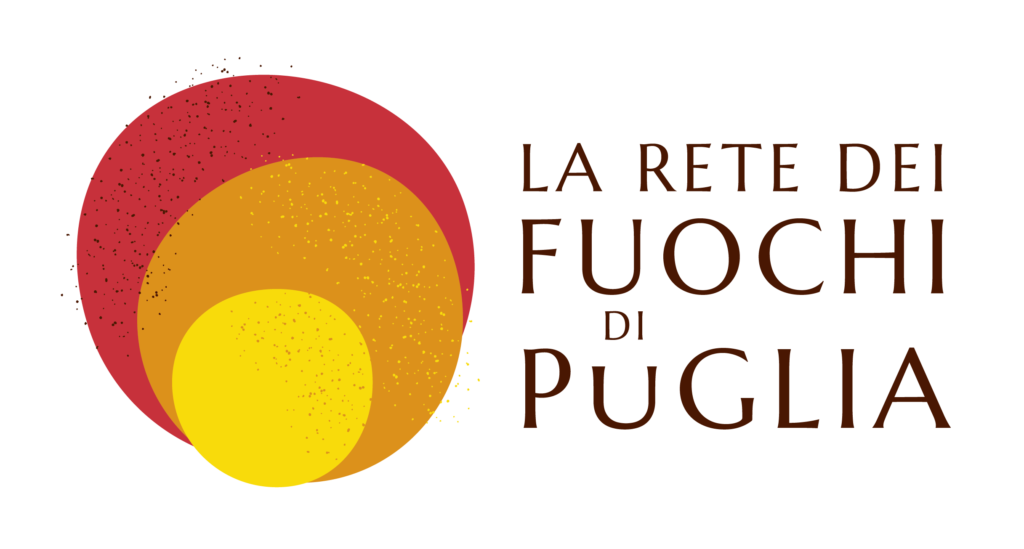Art and Culture
A journey through time
In addition to its wonderful underground world, Castellana Grotte offers an interesting artistic and monumental heritage. You can discover it in a cultural journey that goes from the alleys of the historic centre to the green hills of the countryside, combining beauty and atmosphere, aesthetics and emotion.
SANCTUARY OF MARIA SS. DELLA VETRANA
Built in 1691 over an existing church at the request of the inhabitants of Castellana as a sign of gratitude to the Virgin Mary of Vetrana, who had freed the town from the terrible plague of 1691. It stands in a panoramic position, on one of the five hills of Castellana, about one kilometre from the town centre. The convent has an extensive library of ancient volumes on history, philosophy and theology.
CHURCH OF SAN LEONE MAGNO
Is the main church dedicated to Pope St Leo the Great, and is the oldest in the town. It dates back to 1200. An outstanding façade flanked by a bell tower, in the ancient heart of the town. It is characterised by its Norman defence tower, which over time became a bell tower. The portal is surmounted by a niche on which the titular saint is placed, and by the rose window. Signs of probable renovations can be seen in the wall texture, confirming the antiquity of the building, which was built around a 13th-century defence tower and consecrated in 1287. As early as 1383, work began on a new church, as can be seen from the inscription above the old entrance, now walled up; a fresco depicting the Annunciation in the tower room also dates from that time. The interior has been heavily remodelled and restored. On the side walls are six large 18th-century paintings of the Neapolitan school. The right-side altar is embellished with a canvas signed by Vincenzo Fato from Castellana and dated 1771.

CHURCH OF SAN FRANCESCO DA PAOLA
Built in 1614 on the site of a 15th-century building, the church of the Paolotti dominates the extensive open space of Largo Porta Grande. It stands in front of the square with its sober façade softened by a Baroque portal with floral and geometric motifs. The interior of the church is dominated by stucco decoration, probably contemporary with the 18th- century choir loft and organ. The convent, which also housed an old library, is now a rest home for the elderly. Largo Porta Grande, built around 1400, is the oldest entrance to the city and was equipped with a sturdy iron gate. Positioned at the lowest point of a large rainbow basin, its exterior housed the public cisterns from which the inhabitants drew their water.


CHURCH OF SAN FRANCESCO D'ASSISI
Built in 1651, it has a single aisle in the shape of a Latin cross. It is a noble and very harmonious complex. Inside, it contains about three hundred sculptures and seven magnificent Baroque altars, recently restored, made by Frà Luca Principino who, by the number of works he made, made this church an artistic heritage of inestimable value. The façade is made of ashlar stone and is in Baroque style.
CHURCH OF SANTA MARIA DEL SUFFFRAGIO
Also known as the Church of Purgatory. It was built around 1660. It stands on Via Trento with its characteristic rustic ashlar façade, opened by a single portal surmounted by a bas-relief depicting Saint Michael the Archangel flanked by two purging souls. It is particularly notable for the numerous paintings by Vincenzo Fato (1705-1788) from Castellana that are kept inside. Among them is a painting of Maria del Suffragio. On the entrance door are the organ and the 18th-century choir loft, with gilded frames. The pulpit and side altars are also carved and gilded.
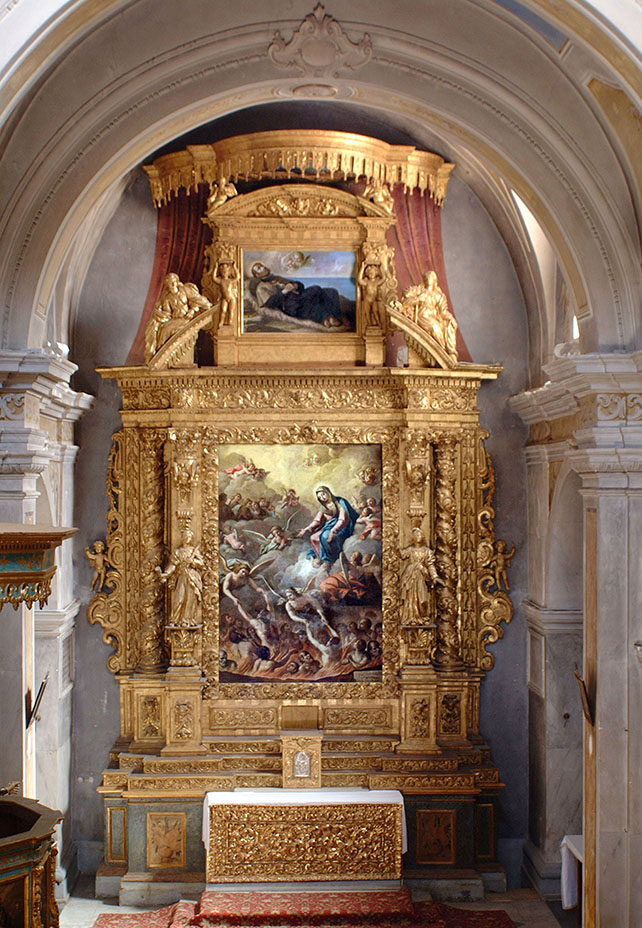
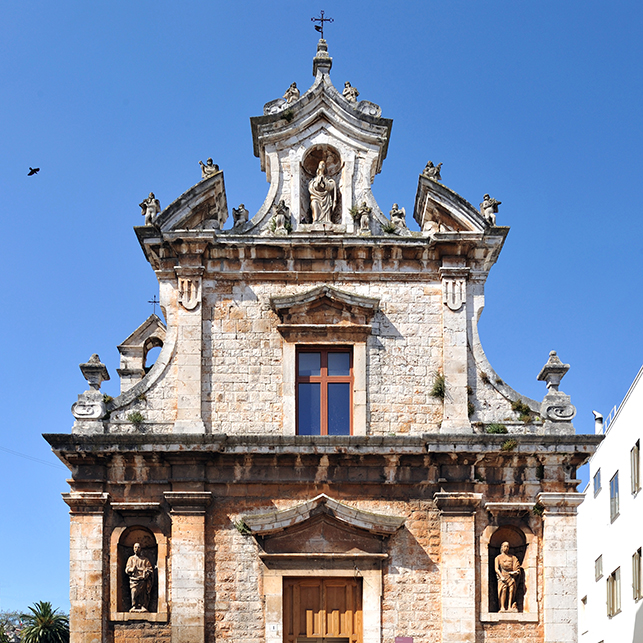
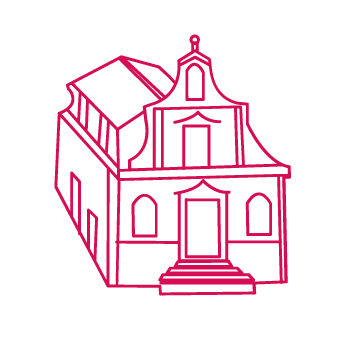
CHURCH OF SANTA MARIA DEL CAROSENO
Dates back to the end of the 18th century. Built by enlarging an old church outside the walls, the interior has pointed arches. The splendid façade is in Baroque, almost Rococo style, enhanced by three recesses, two of which contain statues of St Peter and St John by an unknown artist. Arriving from Via Roma, one can admire the suggestive setting created by the church façade, which closes the long street in white “chianche” (stones) marked by time, over which rise 18th-century mansions.
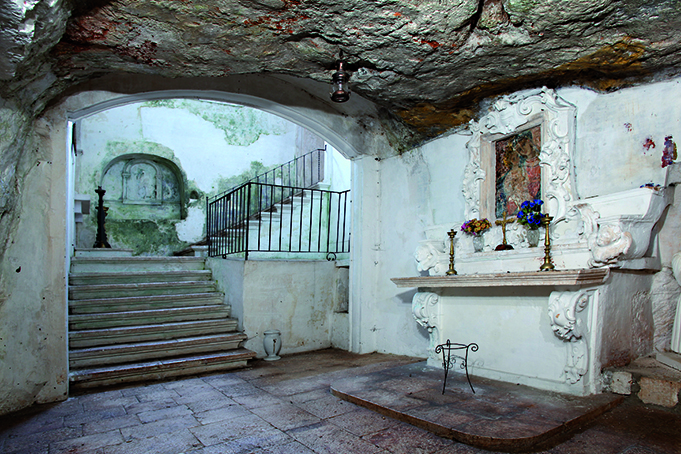
CHURCH OF MADONNA DELLA GROTTA
The only example of an underground church in the Castellana area. It is located near the public gardens. A long series of steps leads up to an underground chamber that precedes this karstic cave dedicated to the Virgin Mary. Here, where it was planned to build a church that was never completed, there is an 18th-century stone altar and an older fresco depicting the Virgin Mary and the Child. The stone nativity scene by local stonemason Angelo Calcagnini dates back to recent years.
CHURCH OF SAN NICOLA DI GENNA
Immersed in the green countryside of Castellana, this is an ancient and evocative rupestrian church. What we can admire today is the result of a substantial 16th-century reconstruction, but its origins appear to be much older. Some historians believe it may be the church of Santa Maria di Genna, named by Pope Alexander III in the bull of 1180. It is located at the centre of seven roads, once an area of extensive vineyards. Throughout the surrounding area there is evidence of a living civilisation since ancient times. Nearby is the “neviera” of San Nicola di Genna, an underground chamber dating from 1788 surmounted by a building, in which the snow that fell abundantly in winter was 'stored'. And to the south of the church, the Muro di Genna is visible, the remains of a medieval structure.
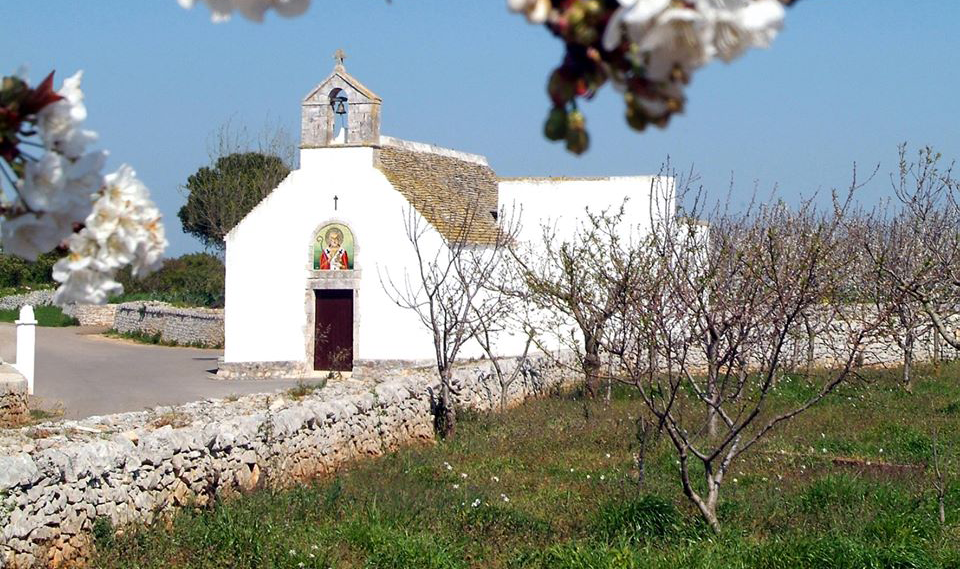
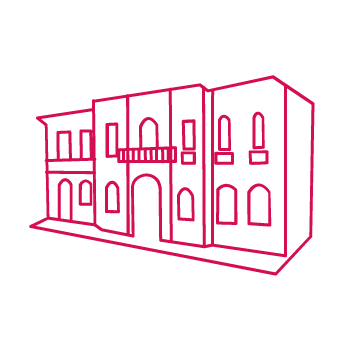
MUNICIPAL PALACE
Originally built as a Franciscan convent, it has a beautiful cloister dating from the end of the 16th century. The building was modified in the 20th century, leaving the barrel vaults intact and demolishing the outer walls. Some of the old cells are now used as public offices and two large rooms with vaulted ceilings frescoed by Alberto Tomaselli have been created: one is now the Council Chamber and the other is used as the Ceremonial Room. The palace houses 80 paintings by the painter Sergio Nicolò de Bellis.
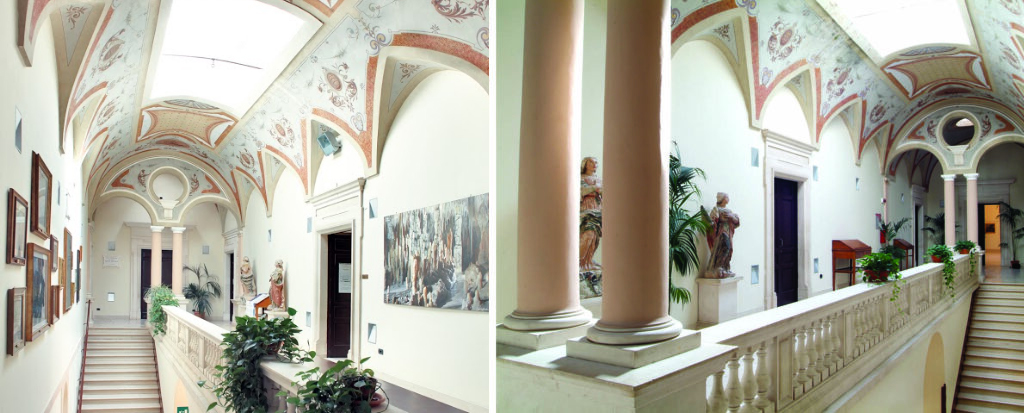
NICOLA AND COSTA SQUARE
This square was built on land donated in 1171 by Abbot Eustasio to Nicola and Costa, two colonists from Otranto. For a long time this square, dominated by its monumental clock, was the meeting point of the townspeople, and from this square a series of side streets open up, alternative routes to discover other areas of the town.

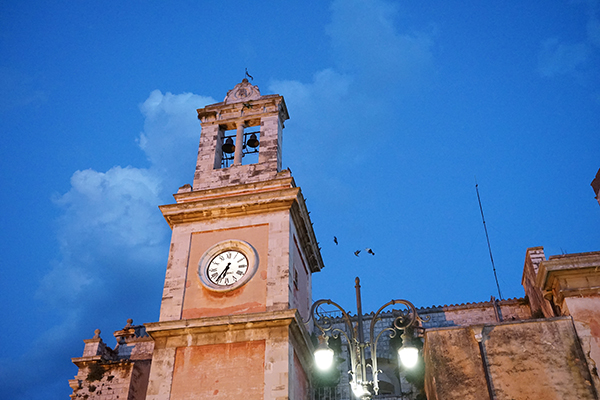
CLOCK TOWER
Built in 1848, it is the only example of an existing tower in the town planning of Castellana. It is the symbolic monument of Nicola e Costa Square and stands between the Town Hall in via Marconi and the church of San Francesco d'Assisi in corso Italia.
BARONAL CURIA
Built at the end of the 11th century as the residence of the governor who supervised the town on behalf of the Count of Conversano, the Curia is also known as the Old Town Hall or Governor's House. It is located in the heart of the historical centre and has recently been perfectly restored.

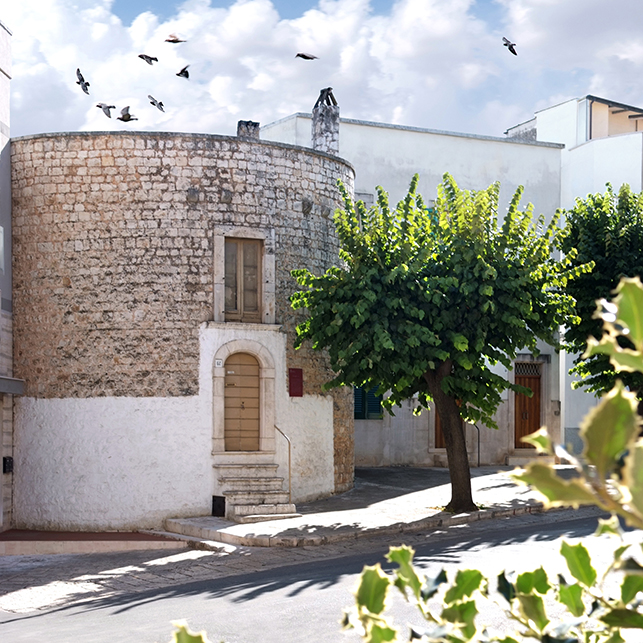
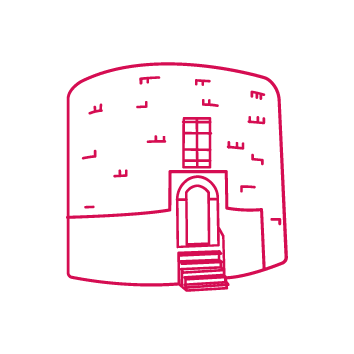
THE NEW TOWER
The circular bastion is the only remaining defensive work of the Castellana city walls. At the top there is a curious sculpture called "Maria la Castellana" or "La Castellana". It is inspired by a woman who, according to widespread legend, found shelter with her two daughters in the woods around the town after the death of her husband, the Castellan of Bari, following the assault on the city of Bari by the Saracens in 978. The tower was later converted into a residence.

ARCO DE MARINIS
Situated between the ancient walls of the city. The arch is characteristic because of its particular height and its balustrade embellished with graceful little columns. It is a gateway to the characteristic historical centre of Castellana, among the narrow streets that wind their way through stone houses, alleyways and courtyards where it is pleasant to "lose yourself" while strolling around.
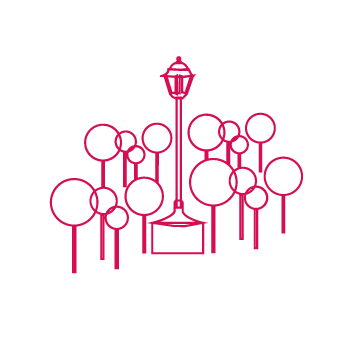
TACCONI VILLA
Construction work on Villa Tacconi began in 1934 following a donation made by Gianvito Tacconi, a citizen of Castellana. After leaving for America, he decided to return and make
an important legacy to his community of origin.
In this green area, right in the centre of town, among stone paths, low walls and imposing trees, it is possible to fully enjoy the beauty of nature.
